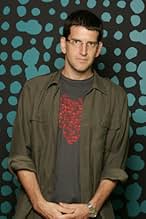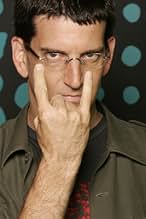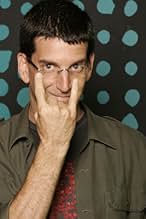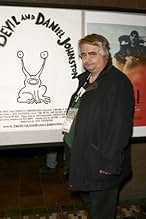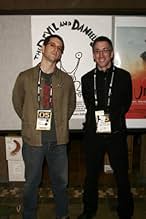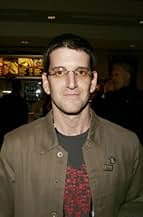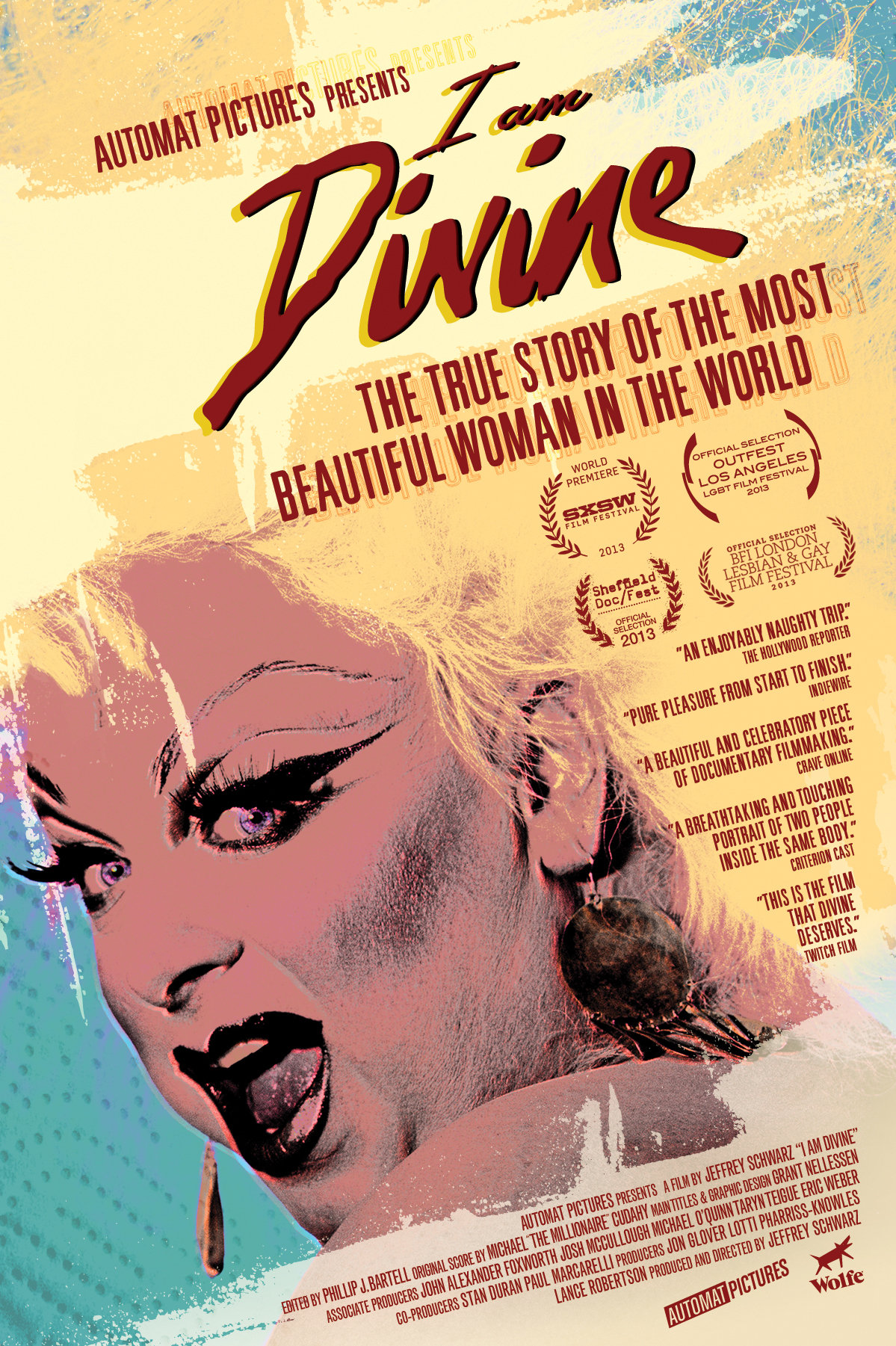VALUTAZIONE IMDb
7,9/10
10.810
LA TUA VALUTAZIONE
Aggiungi una trama nella tua linguaDaniel Johnston, manic-depressive genius singer/songwriter/artist is revealed in this portrait of madness, creativity and love.Daniel Johnston, manic-depressive genius singer/songwriter/artist is revealed in this portrait of madness, creativity and love.Daniel Johnston, manic-depressive genius singer/songwriter/artist is revealed in this portrait of madness, creativity and love.
- Premi
- 2 vittorie e 3 candidature totali
Freddie Mercury
- Self
- (filmato d'archivio)
Recensioni in evidenza
The first section of the film has to do with the early life of Daniel Johnston as well as his being discovered by the musical world in the 1980s. Most of this didn't interest me at all--especially because I hated his music. When the film tried to convince me of his genius, it completely lost me, as he sounded just awful and hurt my ears (though I do acknowledge that he does have a small cult following who see him as a great genius). He definitely is not nor ever has been "mainstream" and this section of the film was poor compared to the last 3/4 of the film. It just didn't do much to compel the average viewer.
However, when it talked about his descent into madness, then the film came to life and became much more compelling. This section of the film was much longer and seemed to be the most important point of this documentary. The impact on Daniel, his family and those around him was profound and very sad to watch.
Because of my background, I have additional insight into the psychiatric state of Daniel Johnston during the film. As I watched, I noticed that although the film mentions that Daniel had "Manic-Depressive Disorder" (i.e., Bipolar Disorder), there was compelling evidence that a more correct diagnosis might have been a Schizoaffective Disorder. In essence, this is Bipolar Disorder along with Schizophrenia, as Daniel's behaviors and thinking always have a bizarreness that isn't classic "mania"--where you'd typically see bizarreness mostly during manic stages. He was so disorganized, occasionally hostile and had such bizarre thinking that this seems like the correct diagnosis instead of Bipolar Disorder. His talking about demons and obsession with his own self-styled religion is just plain weird. Additionally, the hospital prescribing Haldol is indicative of a more severe thought disorder. Normally, with a Bipolar Disorder, they would prescribe antidepressants or Lithium--not a severe mind-altering drug like Haldol. Haldol is practically an elephant tranquilizer and patients on it often are somewhat zombie-like--and it's often given to violent and severely psychotic patients in emergency rooms.
Late in the film, there was an emphasis on Daniel's artwork--not just his music. Despite many declaring it to be great, I found it fascinating because it gave great insight into Daniel's twisted vision of the world--with drawings of devils, monsters and a man whose head is cut in half (a representation of himself). Did I think it was "great"? No--far from it, but the insight it gave was incredible. And, at times, the claims others made about his greatness seemed a bit like hyperbole (saying he was the equal to Brian Wilson for example).
A fascinating film that was well-constructed--using audio tapes, video, interviews and a few scenes of Daniel today. Well made and worth a look.
However, when it talked about his descent into madness, then the film came to life and became much more compelling. This section of the film was much longer and seemed to be the most important point of this documentary. The impact on Daniel, his family and those around him was profound and very sad to watch.
Because of my background, I have additional insight into the psychiatric state of Daniel Johnston during the film. As I watched, I noticed that although the film mentions that Daniel had "Manic-Depressive Disorder" (i.e., Bipolar Disorder), there was compelling evidence that a more correct diagnosis might have been a Schizoaffective Disorder. In essence, this is Bipolar Disorder along with Schizophrenia, as Daniel's behaviors and thinking always have a bizarreness that isn't classic "mania"--where you'd typically see bizarreness mostly during manic stages. He was so disorganized, occasionally hostile and had such bizarre thinking that this seems like the correct diagnosis instead of Bipolar Disorder. His talking about demons and obsession with his own self-styled religion is just plain weird. Additionally, the hospital prescribing Haldol is indicative of a more severe thought disorder. Normally, with a Bipolar Disorder, they would prescribe antidepressants or Lithium--not a severe mind-altering drug like Haldol. Haldol is practically an elephant tranquilizer and patients on it often are somewhat zombie-like--and it's often given to violent and severely psychotic patients in emergency rooms.
Late in the film, there was an emphasis on Daniel's artwork--not just his music. Despite many declaring it to be great, I found it fascinating because it gave great insight into Daniel's twisted vision of the world--with drawings of devils, monsters and a man whose head is cut in half (a representation of himself). Did I think it was "great"? No--far from it, but the insight it gave was incredible. And, at times, the claims others made about his greatness seemed a bit like hyperbole (saying he was the equal to Brian Wilson for example).
A fascinating film that was well-constructed--using audio tapes, video, interviews and a few scenes of Daniel today. Well made and worth a look.
Gifted but troubled artist makes a comeback with the aid of loving parents and good psychiatric care
Biodoc about Daniel Johnston, a multitalented man, a compulsively prolific cartoon artist, song writer and performer, whose bipolar disorder and drug abuse led to episodes of severe mental illness and destructive behaviors, beginning in his early 20s, in the 1980s, problems that stifled his career for many years, until consistent psychiatric care and kindly parental oversight effected a more stable course for him more recently. Now approaching age 45, Johnston has made a comeback of sorts, reaching a level of artistic self control and productivity that has swept him toward unprecedented recognition.
This film charts Johnston's life and family, ingeniously assimilating materials made by Johnston himself as a kid and young adult - super 8 and video footage; cassette audiotapes; still photos as well as contemporary video interviews and stills. By mid-adolescence he was holed up in the basement of his family's home, staying up all hours, writing songs, drawing, making tapes almost nonstop. By his mid-20s he had run away to Austin, Texas, and made a splash on the pop music scene there. But within a year or two, abetted by lots of marijuana and LSD, he began a series of horrendous manic and depressive episodes that scuttled his career, even as he was beginning to receive recognition locally and on a national level.
For much of the next 15 years Johnston was hospitalized frequently after extremely dangerous manic episodes (he seriously injured one acquaintance with a lead pipe, and later interfered with control of his father's small aircraft, leading to a crash landing that, luckily, both survived), zoned out on medications, and vegetating at the family home in Waller, Texas. But in the past few years his course has stabilized.
He's obese, the result of his mood stabilizing medications and inactivity no doubt, and he's no longer the flamboyant, zany free spirit that titillated and frightened so many of his followers in the past. But the film shows us that he is now in better control of his drawing and singing performances than he ever was years earlier. He has been helped immensely by his parents, Bill and Mabel, now in their early 80s, his agent and owner of a small recording company, Jeff Tartakov, and an Austin music journalist, Louis Black, all of whom have worked hard to help sustain and enhance Johnston's reputation as a creative artist.
Their loyal efforts have been well rewarded. The film demonstrates the success of a show of Johnston's more recent drawings at Gallery Zero One in Los Angeles, where over 90% of the works were sold to a single collector before the exhibition even opened. In 2003 Johnston sang before an audience in Sweden that obviously worshiped him. Cartoonist Matt Groening is a fan of Johnston's. Tom Waits and Beck, among many others, have covered his songs. And just a few weeks ago (subsequent to the film) the Whitney Museum in Manhattan announced that Johnston's works would be included in the 2006 Whitney Biennial.
From a psychiatric perspective, a good case can be made that Johnston does suffer from bipolar disorder. But he was compulsively creating art years before his first episode of mood disorder. Like Vincent Van Gogh and some other compulsive artists, Johnston may also have Asperger's Syndrome.
This film is very well crafted until near the end. Actually it seems as if the filmmakers really didn't know how or when to end it. There are a half dozen moments in the last 20 minutes when they could have done so. See more, including examples of Johnston's art work, at these websites: www.museumoflove.com and www.rejectedunknown.com/feature.htm. My grade: B+ 8/10.
This film charts Johnston's life and family, ingeniously assimilating materials made by Johnston himself as a kid and young adult - super 8 and video footage; cassette audiotapes; still photos as well as contemporary video interviews and stills. By mid-adolescence he was holed up in the basement of his family's home, staying up all hours, writing songs, drawing, making tapes almost nonstop. By his mid-20s he had run away to Austin, Texas, and made a splash on the pop music scene there. But within a year or two, abetted by lots of marijuana and LSD, he began a series of horrendous manic and depressive episodes that scuttled his career, even as he was beginning to receive recognition locally and on a national level.
For much of the next 15 years Johnston was hospitalized frequently after extremely dangerous manic episodes (he seriously injured one acquaintance with a lead pipe, and later interfered with control of his father's small aircraft, leading to a crash landing that, luckily, both survived), zoned out on medications, and vegetating at the family home in Waller, Texas. But in the past few years his course has stabilized.
He's obese, the result of his mood stabilizing medications and inactivity no doubt, and he's no longer the flamboyant, zany free spirit that titillated and frightened so many of his followers in the past. But the film shows us that he is now in better control of his drawing and singing performances than he ever was years earlier. He has been helped immensely by his parents, Bill and Mabel, now in their early 80s, his agent and owner of a small recording company, Jeff Tartakov, and an Austin music journalist, Louis Black, all of whom have worked hard to help sustain and enhance Johnston's reputation as a creative artist.
Their loyal efforts have been well rewarded. The film demonstrates the success of a show of Johnston's more recent drawings at Gallery Zero One in Los Angeles, where over 90% of the works were sold to a single collector before the exhibition even opened. In 2003 Johnston sang before an audience in Sweden that obviously worshiped him. Cartoonist Matt Groening is a fan of Johnston's. Tom Waits and Beck, among many others, have covered his songs. And just a few weeks ago (subsequent to the film) the Whitney Museum in Manhattan announced that Johnston's works would be included in the 2006 Whitney Biennial.
From a psychiatric perspective, a good case can be made that Johnston does suffer from bipolar disorder. But he was compulsively creating art years before his first episode of mood disorder. Like Vincent Van Gogh and some other compulsive artists, Johnston may also have Asperger's Syndrome.
This film is very well crafted until near the end. Actually it seems as if the filmmakers really didn't know how or when to end it. There are a half dozen moments in the last 20 minutes when they could have done so. See more, including examples of Johnston's art work, at these websites: www.museumoflove.com and www.rejectedunknown.com/feature.htm. My grade: B+ 8/10.
Surely this is the most moving piece of film about not just a musician but also a portrait of someone who suffers, copes and lives with depression. Cut together with home movies, family photos, concert footage and interviews old and new it tells the extraordinary life of this very talented but tortured artist. There has always been a link between madness and creativity; artists are slightly different, outsiders, free thinkers, they must be a bit mad to make the work they do. But the story of Daniel is one of actual mania, real madness, deep depression and an immense body of work from, films to music to paintings and sketches. It tells it like it is, it shows him at all times falling apart, going in and out of mental hospitals and still working prolifically. The interviews with his parents are very moving as they at times are reduced to tears and lost for words. Seeing Daniel now how he is as apposed to how he was is also a lump in the throat moment. He sits hunched over his piano, staring into space, banging out song after song and smoking cigarette after cigarette it is heartbreakingly fascinating. But putting his mental health to one side for the moment lets focus on the work, Daniel has amassed literally thousands of tapes full of songs and spoken word, he used to make so many films and has an equally large collection of drawings and art. This amount of work is what makes this documentary so good. You can tell the whole story when it has been so well documented like this from the very beginning right up to the present day every part of Daniels journey is either on tape or film whether it was documented by himself or the likes of MTV. So this portrayal is fascinating, heart-warming and sad but it shows the real genius behind Daniels music that has not only sold records on its own merit but has been covered by over 150 of the worlds top recording artists. If you don't know about Daniel Johnston isn't it about time you found out?
10lokidog
This film take you on a journey into a creative genius' struggle with life. Daniel Johnston recorded his entire life on cassette tape and his early life on film. Later he appeared on MTV, and in venues in Austin, TX on film and video. These provide the film-maker with a wide array of media for telling this story.
Jeff Feuerzeig weaves this material seamlessly into what is one of the most emotionally wrenching films I've seen in the last year and one of my favorite documentaries ever. It is hard to compare this film with documentaries like those of Michael Moore which are comedic and topical, or those of Errol Morris, which tend to focus on issues and facts. This documentary brings emotional threads and creativity into play in a way that dissolves the usual harsh contrast between a story and it's telling. You forget you are watching a documentary film, and become immersed in Daniel's life. Daniel's effect on those around him is interwoven with his own recordings. His family and friend are there to add to his story to show how his life is reflected upon them. Feuerzeig use of Daniel's parents narrative is simply masterful - it provides important information, and at the same time illustrates the the emotional turmoil his illness causes in the lives of those that love him. Daniel's family is portrayed from the early period of his illness when they have no idea what mental illness really means, to the present time when they become his supporters and advocates. Eventually, family and friend's are shown coming to terms with Daniel's mental illness, and experience their own emotional growth as well.
It deservedly won the Directors Award at Sundance 2005, and I think it would have won the audience award if it had a different play schedule.
Jeff Feuerzeig weaves this material seamlessly into what is one of the most emotionally wrenching films I've seen in the last year and one of my favorite documentaries ever. It is hard to compare this film with documentaries like those of Michael Moore which are comedic and topical, or those of Errol Morris, which tend to focus on issues and facts. This documentary brings emotional threads and creativity into play in a way that dissolves the usual harsh contrast between a story and it's telling. You forget you are watching a documentary film, and become immersed in Daniel's life. Daniel's effect on those around him is interwoven with his own recordings. His family and friend are there to add to his story to show how his life is reflected upon them. Feuerzeig use of Daniel's parents narrative is simply masterful - it provides important information, and at the same time illustrates the the emotional turmoil his illness causes in the lives of those that love him. Daniel's family is portrayed from the early period of his illness when they have no idea what mental illness really means, to the present time when they become his supporters and advocates. Eventually, family and friend's are shown coming to terms with Daniel's mental illness, and experience their own emotional growth as well.
It deservedly won the Directors Award at Sundance 2005, and I think it would have won the audience award if it had a different play schedule.
I had the opportunity to see this film several days ago while working at the American Film Market, and I have been telling everyone I know to see it. I'm not sure what the deal is with a wide release, but everyone who loves documentary should see this one when it comes out.
For those of you who aren't familiar with the title character, Daniel Johnston is a manic- depressive artist/musician who currently resides in Waller, Texas with his elderly parents. I had been a fan of his music for sometime, and also having lived in Austin, had been aware of his status as a local fixture, but there was so much fascinating information divulged in this film that I never knew about. The film spans the life (up to the present) of this incredibly complex person, who truly resides in a world of his own creation. It's clear that the filmmaker has a deep appreciation and love for Johnston's work, and his world is painstakingly brought to life through animation, recreation, and wonderfully edited home movies and audio cassette tapes. His friends and family also offer insight into the various events which were pivotal in Johnston's life.
The wealth of self-documentation that Johnston has created over his life, starting from childhood, is one of the things that makes this film truly magnificent. Over the years, we can literally see this person change before our eyes, as though gradually being claimed by a dark force. The "dark force" in this case is manic depression; metaphorically The Devil for Johnston, who is a devout Christian. Johnston's struggle to connect with people he loves through the fog of his illness is devastating. While this can be difficult to watch (at least for me), there is the powerful reward of the music and drawings that Johnston has produced throughout, both in spite of and as a direct result of this struggle. That something heartbreakingly beautiful in it's simplicity and honestly can come from such a terrible struggle, is what makes this story and this film remarkable.
For those of you who aren't familiar with the title character, Daniel Johnston is a manic- depressive artist/musician who currently resides in Waller, Texas with his elderly parents. I had been a fan of his music for sometime, and also having lived in Austin, had been aware of his status as a local fixture, but there was so much fascinating information divulged in this film that I never knew about. The film spans the life (up to the present) of this incredibly complex person, who truly resides in a world of his own creation. It's clear that the filmmaker has a deep appreciation and love for Johnston's work, and his world is painstakingly brought to life through animation, recreation, and wonderfully edited home movies and audio cassette tapes. His friends and family also offer insight into the various events which were pivotal in Johnston's life.
The wealth of self-documentation that Johnston has created over his life, starting from childhood, is one of the things that makes this film truly magnificent. Over the years, we can literally see this person change before our eyes, as though gradually being claimed by a dark force. The "dark force" in this case is manic depression; metaphorically The Devil for Johnston, who is a devout Christian. Johnston's struggle to connect with people he loves through the fog of his illness is devastating. While this can be difficult to watch (at least for me), there is the powerful reward of the music and drawings that Johnston has produced throughout, both in spite of and as a direct result of this struggle. That something heartbreakingly beautiful in it's simplicity and honestly can come from such a terrible struggle, is what makes this story and this film remarkable.
Lo sapevi?
- QuizAs seen in the DVD extras, Daniel and Laurie would meet again after 30+ years following a screening of this film. She said she kept every memento he gave her and was grateful that he always built up her self esteem and said so many nice things to her when they were friends. The two shared a beautiful moment with a nice hug when they saw each other again.
- Citazioni
Daniel Johnston: I never met a girl I didn't meet.
- ConnessioniFeatured in Segundo aniversario (2007)
- Colonne sonoreSilly Love
Written by Daniel Johnston
Performed by Daniel Johnston
Published by Eternal Yip Eye Music (BMI)
Administered by BUG Music Publishing
I più visti
Accedi per valutare e creare un elenco di titoli salvati per ottenere consigli personalizzati
- How long is The Devil and Daniel Johnston?Powered by Alexa
Dettagli
Botteghino
- Lordo Stati Uniti e Canada
- 334.450 USD
- Fine settimana di apertura Stati Uniti e Canada
- 23.192 USD
- 2 apr 2006
- Lordo in tutto il mondo
- 432.339 USD
- Tempo di esecuzione1 ora 50 minuti
- Colore
- Mix di suoni
- Proporzioni
- 1.85 : 1
Contribuisci a questa pagina
Suggerisci una modifica o aggiungi i contenuti mancanti


